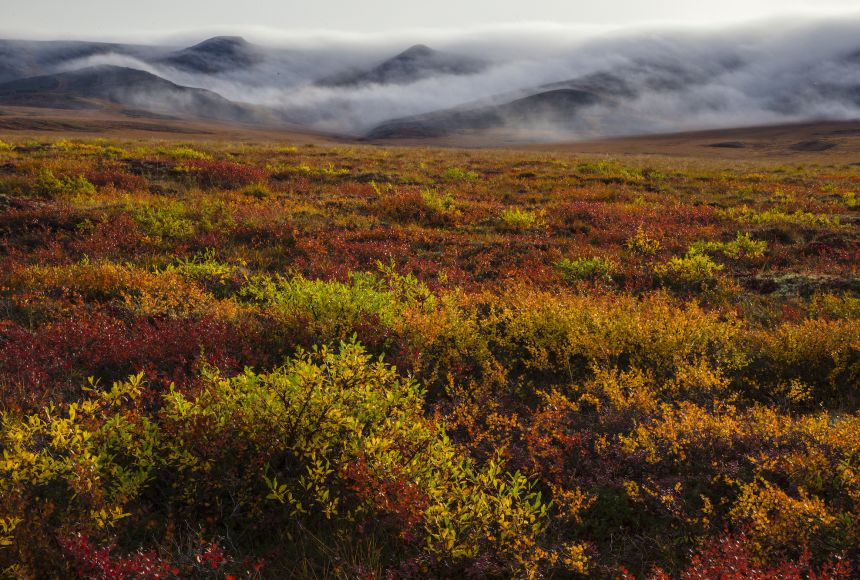For most of the year, the tundra biome is a cold, frozen landscape. This biome has a short growing season, followed by harsh conditions that the plants and animals in the region need special adaptations to survive.
Tundra form in two distinct cold and dry regions. Arctic tundra are found on high-latitude landmasses, above the Arctic Circle—in Alaska, Canada, Russia, Greenland, Iceland, and Scandinavia, for example—or on far southern regions, like Antarctica. Alpine tundra are located at very high elevations atop mountains, where overnight temperatures fall below freezing.
Tundra regions typically get less than 25 centimeters (10 inches) of precipitation annually, which means these areas are also considered deserts. They have long, cold winters with high winds and average temperatures below freezing for six to ten months of the year. On average, only six to ten weeks of the year have sufficiently warm temperatures and long days for plant growth. The soil in the Arctic is largely permafrost or soil that remains frozen year-round, leaving only a thin surface layer of thawed soil in summer for plant roots to grow in. Tundra soil is also scarce in many of the nutrients that plants need to grow.
These conditions lead to one of the tundra biome’s most distinct features: They are largely treeless. (The word “tundra” derives from the Finnish word tunturia, meaning barren or treeless hill.) Instead, the tundra has patchy, low-to-ground vegetation consisting of small shrubs, grasses, mosses, sedges, and lichens, all of which are better adapted to withstand tundra conditions.
Animals in the tundra are also adapted to extreme conditions, and they take advantage of the temporary explosion of plant and insect life in the short growing season. Tundra wildlife includes small mammals—such as Norway lemmings (Lemmus lemmus), arctic hares (Lepis arcticus), and arctic ground squirrels (Spermophilus parryii)—and large mammals, such as caribou (Rangifer tarandus). These animals build up stores of fat to sustain and insulate them through the winter. They also have thick coats of fur for further insulation. Some save energy by hibernating during the long winter months. Others migrate to warmer climes during winter. Many birds also migrate into the tundra during the growing season to feed, mate, and nest.
Atop the food chain are tundra carnivores, such as arctic foxes (Vulpes lagopus), arctic wolves (Canis lupus), snowy owls (Bubo scandiaca), and polar bears (Ursus maritimus), which move into the tundra during the summer when prey is plentiful and their usual hunting grounds on sea ice diminish. Many animals, both predator and prey, develop white fur or feathers in the winter months for camouflage in ice and snow.
Tundra insects have also developed adaptations for the cold; mosquitoes (Aedes nigripes), for example, have a chemical compound that acts as antifreeze, lowering the freezing temperature in their bodily fluids.
Though the tundra is remote, it is increasingly threatened as people encroach on it to build or drill for oil, for example. Perhaps the greatest danger, however, comes from climate change. Warming temperatures could disrupt the cold tundra biome and the life in it, as well as thaw its underlying permafrost, releasing greenhouse gases that would further accelerate global warming.
